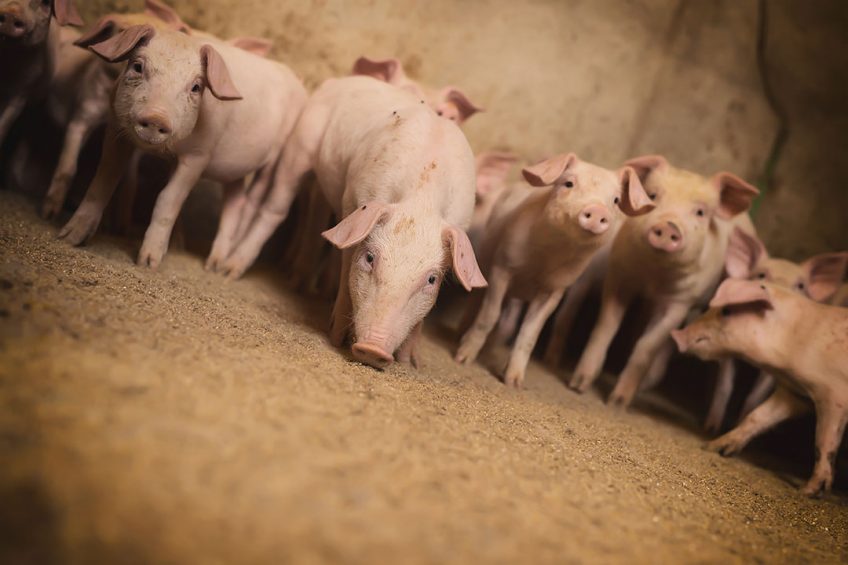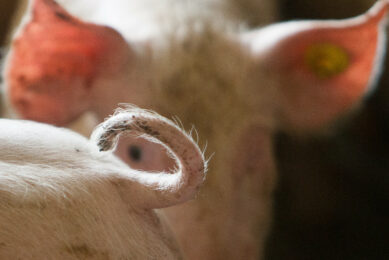Improving microbiota while preventing inflammation

Gut health is multi-factorial and complex and depends on the environment, farm management, feed and housing changes. For pork producers, it is a major concern due to its impact on growth performance, animal welfare, economic sustainability and consumer concerns. With use of antibiotics being challenged, the development of alternatives is a must.
The intestine is the largest interface between an animal and its environment. An intact intestinal barrier is thus essential in maintaining gut health and preventing tissue injury and several diseases. The intestinal barrier is formed by enterocyte membranes, tight junctions, secreted mucus and immunologic factors, such as tissue macrophages.
Dysfunction of this barrier can be caused by different types of stress (e.g., physiological, pathological, psychological, pharmacological) and can lead to increased intestinal permeability. Increased permeability to endotoxins, a component of the walls of Gram-negative bacteria, causes local or systemic inflammatory reactions, or both. The immune response can then promote more serious conditions. Hence, assessing barrier integrity is of the utmost importance.
Well-balanced microflora
The gut microflora is an integral part of the digestive system, which is colonised by an abundant and taxonomically diverse microbial community. Because each species of organism in the intestine has different metabolic capabilities, the relative proportion of different species of organisms changes in response to a variety of factors including age, diet composition, rearing environment and possibly genotype. To avoid the overgrowth of pathogenic bacteria in the gut leading to diseases, maintaining a well-balanced microflora is also essential.
Piglet weaning
Intensive piglet breeding generates critical periods where gut health is highly challenged, including the modification of the gut microflora leading to a higher risk of overgrowth of intestinal pathogenic bacteria. At weaning, piglets face multi-factorial stresses and challenges in a short time:
- Adaptation to the feed intake: One of the main targets for farmers is to ensure that piglets eat properly after weaning. The longer they go without eating at weaning, the higher the risk of diarrhoea. The drop in feed intake is likely to cause difficulties achieving growth requirements, due to reduction of the villi height and thus nutrient absorption area, and to mobilisation of fat and muscle reserves.
- Adaptation to the feed distribution: Piglets need to move from suckling milk at the sow to a solid feed.
- Feed composition changes: Piglets’ feed changes from milk containing lactose to a prestarter feed containing mainly plant-based raw materials (with new nutrients as starch for example).
- Adaptation to a new environment: Piglets are separated from the mother and move from a farrowing crate to a post-weaning pen, with possible variation of the microflora present in the environment.
All those changes require physiological and immunological adaptations that are non-visible. For example, weaning presents the first encounter between piglets and some new raw materials. Consequently, this creates a risk of a gut microbiota imbalance involving diarrhoea and a loss of performance. That is why it is important to pay attention to the modulation of the digestive microflora.
Furthermore, animals have to adapt their enzymatic system in order to digest these new raw materials, which is an important physiological change. At first, the piglet’s organs will consider new feed as an antigen.
Piglets also have to adapt their immune system in order to accept this new feed. As 70–80% of the immune cells are located in the gut, that adaptation can generate local inflammation and oxidative stress. In contact with antigens, macrophages induce the production of pro-inflammatory and oxidative stress markers, and this consumes a lot of energy and nutrients which are not dedicated to performance.
Antibiotics usage
To prevent and cure the negative impacts and reduction of performance during weaning, antibiotics are commonly used in feed. Their roles can be multiple with a large spectrum which aims to regulate the gut microflora through non-specific elimination of a big part of the bacteria population. Another property of antibiotics demonstrated in the literature is their anti-inflammatory role.
With an eye on increased bans on antimicrobial growth promoters (AGP), feed millers, pre-mixers and farmers have to find reliable, validated and cost-effective solutions. Moreover, alternative products must act differently from AGP so as to not develop the same resistance mechanisms and thus the same threats for human health.
With the aim to replace AGP efficiently and to take care of gut health, animal nutrition company, Wisium, part of ADM, developed an alternative approach that combined complementary solutions, acting on the gut microbiota modulation and on the modulation of intestinal inflammation through regulation of the immune response.
A global and holistic approach
To help animals maintain a healthy gut during this stressful period, a patented combination of plant extracts (Powerjet) and a patented Copper Exchanged Clay was developed. The natural active ingredients of the plant extract combination have been selected for their synergistic effect against intestinal inflammation and oxidative stress.
Copper Exchanged Clay aims to support piglets’ microbiota and growth during challenging periods such as weaning but also to ensure a well-balanced and secure microflora during the animals’ entire life. This solution is a combination of copper ions and a synthetic zeolite having antimicrobial properties and able to specifically target pathogenic bacteria and have a limited action against beneficial bacteria. Copper content is very low, 1,000 times lower than the copper content in piglet feed permitted in the EU.
Proof of efficacy
The complementary effects of the two solutions were tested on piglets at weaning and compared to a group of piglets on a diet with two antibiotics and to a control group not supplemented with antibiotics. The effects on piglet performance and sanitary status (observed diarrhoea occurrence) were studied.
At weaning (20 days of age), 144 piglets were allocated to one of three groups until the end of the starter period (69 days of age). The R&D trial was run under challenging conditions in order to mimic field conditions and provoke some digestive disorders. Buildings had not been cleaned before the piglets entered, piglet density was higher than recommended and the temperature in the building was fixed at 15°C the first day of the trial. The three groups were:
- Negative control group with animals receiving a standard diet (prestarter diet from 20 to 43 days and then starter diet from 44 to 69 days)
- Positive control group receiving the standard diet + 120 ppm of colistin + 800 ppm of chlortetracycline (CTC) in the prestarter diet and then non-medicated starter feed
- Combination group receiving plant extracts + Copper Exchanged Clay in prestarter and starter diets.
Live weight at 69 days was the highest for animals receiving medication (positive control). The combination of plant extracts and Copper Exchanged Clay obtained intermediate weight between negative control group and positive control group. Feed Conversion Ratio (FCR) was the lowest with the plant extracts and Copper Exchanged Clay due to a normal feed intake and a better average daily gain compared to the negative control group.
The FCR of the positive control group between 43 and 69 days was significantly degraded in comparison with the combination plant extracts and Copper Exchanged Clay (1.971 vs 1.727, see Table 1). That may be explained by an additional expenditure of energy and additional nutrients following the withdrawal period of antibiotics which required a readjustment of microbiota and activated intestinal inflammation process.
Regarding the sanitary status of the trial, the diarrhoea episodes and the medications were evaluated. In this challenged condition, the diarrhoea episodes, considered as the observation of at least one piglet showing signs of diarrhoea within a pen on a daily basis between 20 and 42 days of age, was 23% in the control piglets.
The combination of plant extracts and Copper Exchanged Clay halved the diarrhoea episodes (12%) compared to the negative control group. The best result was in the medicated group, which reduced diarrhoea incidence to 4% (see Table 2). The number of piglets treated with individual medication because of their health status was also drastically decreased with the combination of plant extracts and Copper Exchanged Clay compared to the control group (8% vs 27%).
Complementary mode of action
The approach combining plant extracts (Powerjet) and Copper Exchanged Clay allowed intermediate results between the control and medicated groups. The actions on gut health of the two solutions are complementary: Copper Exchanged Clay acts on the modulation of gut flora, inhibiting pathogen growth; and plant extracts, by preventing intestinal inflammation, promote good intestinal integrity and allow energy to be saved for the production purpose.
Translating a successful weaning into good performance occurs through proper gut health management. Nevertheless, it remains complex to stabilise performance of a medicated feed in the prestarter period. That is why reliable nutritional specialties are part of the solution in reducing antibiotic use. A holistic approach to animal nutrition and health, involving all actors in the feed value chain, is necessary to accomplish the transition. Wisium aims to propose such a comprehensive approach, with a multilevel action encompassing quality control, formulation, nutritional specialties, industrial support and farm-management practices to ensure good gut health, good performance and strong profitability.











